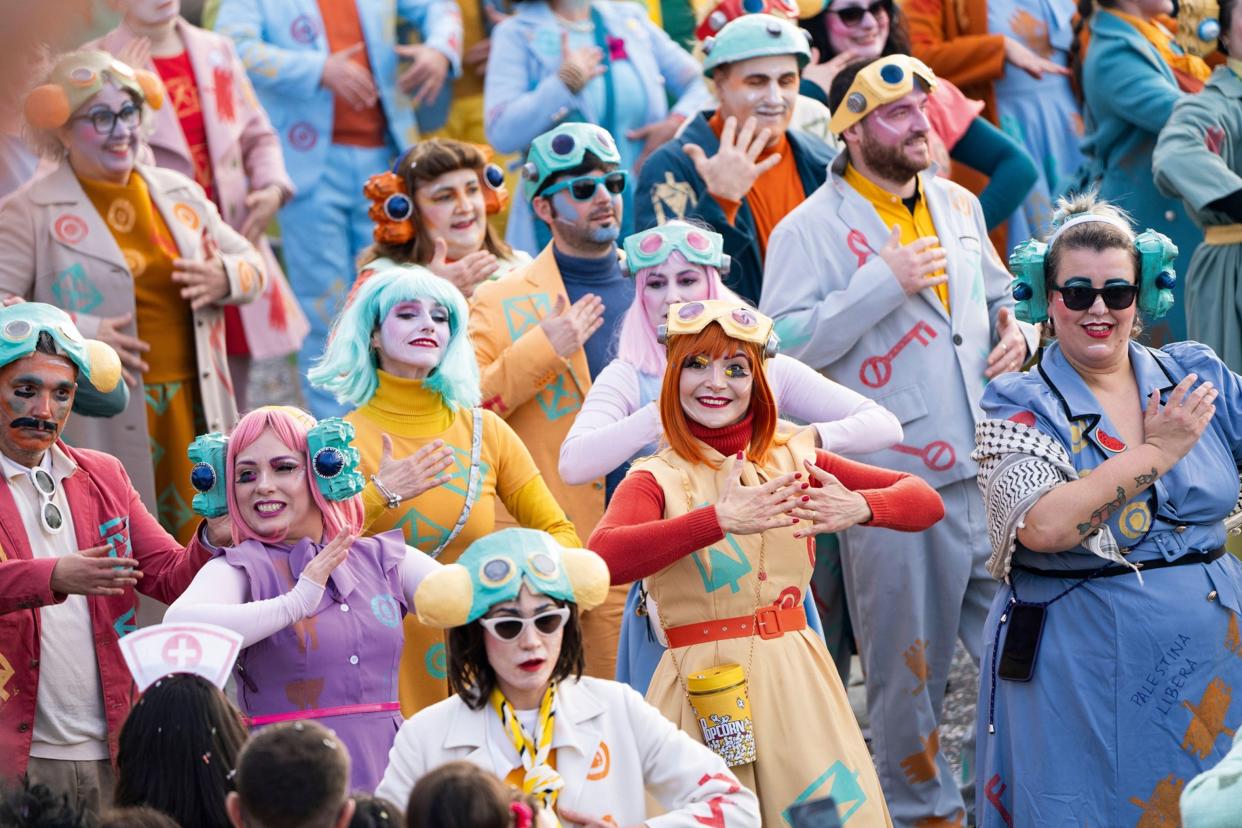
This article was produced by National Geographic Traveller (UK).
Some three million people gather each year to attend Carnival in Venice. Festivities in the City of Water see locals and visitors alike donning old-world dresses and intricate masks to attend balls lit by chandeliers or to simply stroll along the frenzied streets. But there are more than 70 local, lesser-known Carnival celebrations in Italy, each with their own quirks. Some revolve around food, others celebrate witty humour and many feature allegorical floats — colourful, sky-reaching papier-mâché monuments, the result of centuries-old artisanal traditions.
This event in Ivrea, at the foot of the Alps, is defined by the Battle of the Oranges, Italy’s largest food brawl, scheduled for three afternoons around Shrove Tuesday. Thousands of townspeople divide into teams and fight to the last fruit, a tradition that, according to lore, re-enacts a 13th-century rebellion against a local tyrant. The ‘weapons’ are supplied, and visitors can buy a ticket in advance to join in. Celebrations end with the customary parting line: ‘Arvedse a giobia a ’n bot’, meaning ‘we’ll see each other on Thursday’ — referring to the Thursday on which Easter-related festivities will begin again the following year.
Held in the northern town of Cento, this is the only Carnival in Europe to be officially ‘twinned’ with the world-famous one in Rio de Janeiro. Brazilian samba dancers join the festivities, which span five Sundays around February and include float parades, performances by Italian celebrities and a bonfire. Five associations compete for the prize of best float and, in the days following the award ceremony, the winners organise a jovial ‘funeral’: a cortege complete with coffins and black veils, during which they get to tease the other teams. The losers take it in their stride, resolving to get even the next year.
The Carnival celebrations in this seaside Tuscan city are second only to those in Venice. Some 100,000 spectators gather for each of the six parades between January and February, gasping at floats that can be as tall as 100ft. As in the rest of the country, the floats change yearly and are often allegorical; you might spot, say, a gargantuan mammoth referencing melting glaciers, or harpies representing temptations. After the procession, make for the Carnival Citadel, which is open year-round. Highlights include a museum that traces the timeline of celebrations and hangars in which artisans build floats (sometimes leaving the doors open to let visitors peer in).
Not only is this one of Italy’s oldest Carnival celebrations, dating back to at least 1347, it’s also the sweetest. It takes place in Fano, a seaside town in the country’s centre, over three consecutive Sundays between February and March, and each day sees floats parading down the same street three times. The first lap presents the year’s creations. The second features a traditional, characteristic getto — the ‘throwing’ of chocolate and sugary treats down to the public. For the final stage of the event, called luminaria (‘illumination’), the march lights up at sundown to evocative effect.
Tradition has it this Apulian celebration started in 1394 when, due to the threat of invasion, locals moved the relics of Saint Stephen from the coast to Putignano, a town in the safer hinterlands. As the march began, on 26 December, farmers left their fields and joined the procession. Today, the date still marks the beginning of Carnevale di Putignano, which runs until late February — making it Italy’s longest carnival. The main events — masked processions and float parades — are held on Thursdays, but there are themed exhibitions, papier-mâché workshops and shows programmed throughout the entire festive period.
Despite being one of the oldest and most-loved events in Sardinian folklore, Carnival in Mamoiada, in the island’s interior, remained little-known to outsiders until the last century. Instead of scenic floats and loud parades, the season here is marked by the arrival of stern Mamuthones, men dressed in black masks and dark furs, and authoritative Issohadores, donning white masks and red waistcoats. The origin of the costumes has been lost to time, but they’re now a symbol of the region: spot them parading on 17 January, on the feast of Saint Anthony; Shrove Tuesday; and Easter Sunday.
Published in the October 2024 issue of National Geographic Traveller (UK).
To subscribe to National Geographic Traveller (UK) magazine click here. (Available in select countries only).







